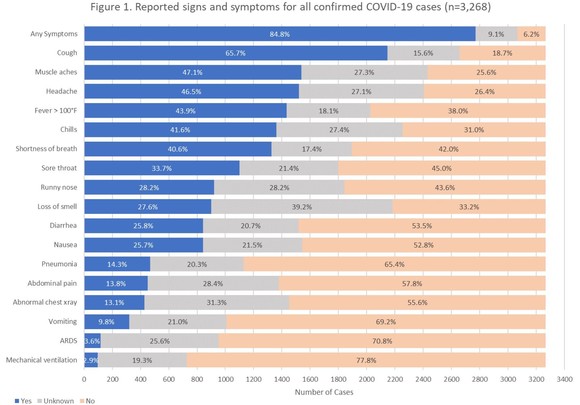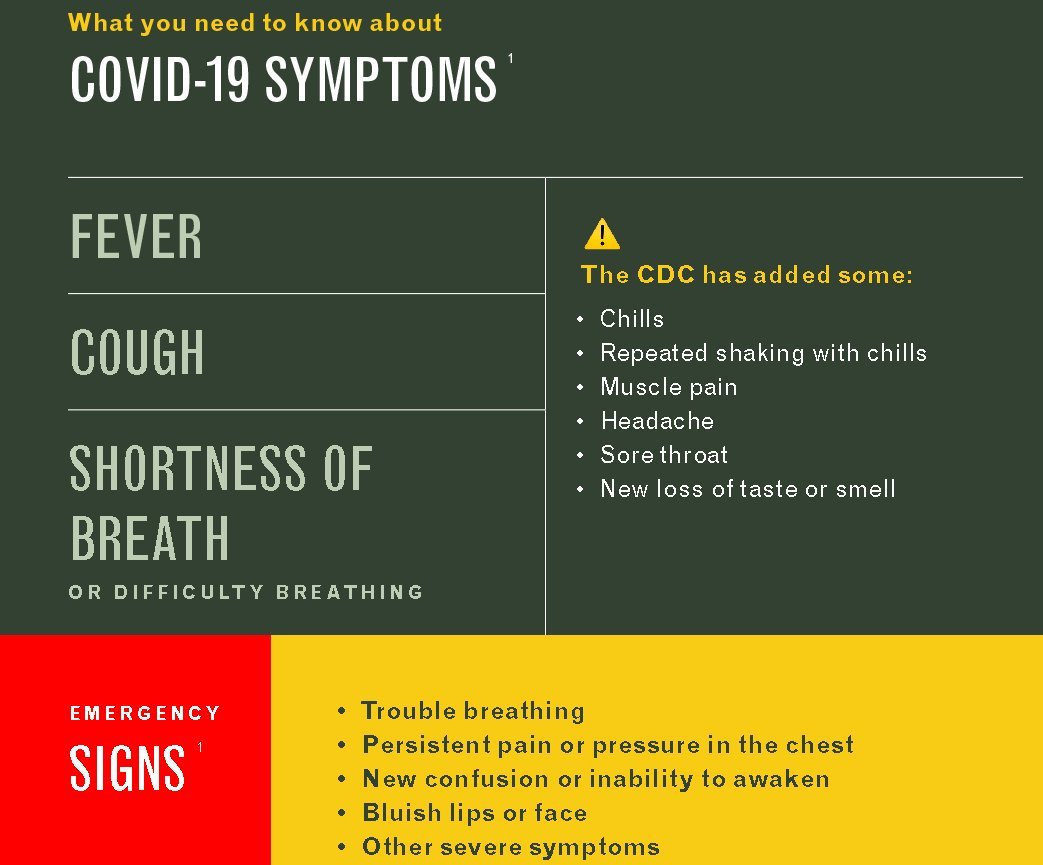|
Dear Friends and Neighbors,
Oregon has confirmed its first case of a child impacted by an inflammatory illness connected to the coronavirus. There have been cases of this new illness previously confirmed in California, Connecticut, New York, and Washington. Oregon Public Broadcasting has more details here.
I know this is scary news, and the state is taking this development very seriously. We still don’t know enough about this virus, and any complacency can come with significant risks. I will be monitoring this new development and keep you informed as best I can about how to take additional precautions.
Here is what the Oregon Health Authority said today about this illness:
Oregon Health Authority has learned of the state’s first case of pediatric multi-system inflammatory syndrome, a rare but emerging condition in children that is believed to be associated with COVID-19 infection. The case is a girl who had confirmed COVID-19. She is being treated at Randall Children’s Hospital at Legacy Emanuel in Portland.
Little is known about the syndrome, although it’s believed to be rare. Boston Children’s Hospital, citing a recent health alert out of the United Kingdom, noted symptoms that include fever, inflammation, and poor function in one or more organs. It is reportedly similar to Kawasaki disease, which causes fever, rash, swelling of hands and feet, redness of the eyes, swollen lymph glands, and inflammation of the mouth, lips and throat.
If your child is experiencing COVID-19 symptoms, call your health care provider. If they’re having trouble breathing or other severe symptoms, call 911.
Every county outside the three counties in the Portland metro area (Multnomah, Washington, and Clackamas) has now submitted an application to start Phase 1 of the state’s gradual reopening plan. Governor Brown will hold a teleconference tomorrow at 10 a.m. to announce the counties that can begin reopening on Friday.
Today, I’m discussing details about how personal services providers will need to operate if they reopen in a reopened county. This category of businesses includes barber shops, hair salons, esthetician practices, medical spas, facial spas and day spas, non-medical massage therapy services, nail salons, tanning salons, and tattoo/piercing parlors.
Please note that full guidance from the state is available here. This is a very long list of requirements, and there are additional details in the full guidance that I won’t be listing in this newsletter.
You can go here for full guidance for retail stores and here for restaurants and bars.
Personal services providers are required to do the following in terms of client screening:
- Contact client prior to appointment and ask:
- Have you had a cough?
- Have you had a fever?
- Have you had shortness of breath?
- Have you been in close contact with anyone with these symptoms or anyone who has been diagnosed with COVID-19 in the past 14 days?
- Reschedule an appointment if client answers “yes” to any of the questions above until client’s symptoms (cough, fever and shortness of breath) have been resolved, and fever has been resolved without medication for at least 72 hours, or at least 14 days after contact with a person sick with cough, fever, or diagnosed COVID-19.
- Review information about how COVID-19 is spread from one person to another: namely, through coughing, sneezing, touching, or via objects touched by someone with the virus.
- Record client contact information, date and time of appointment and provider for each client. If there is a positive COVID-19 case associated with the business, public health may need the business to provide this information for a contact tracing investigation. Unless otherwise required, this information may be destroyed after 60 days from the appointment.
Providers are also required to:
- Immediately send home any employee with COVID-19 like symptoms (cough, fever, shortness of breath, etc.) and not allow the employee to return to work until at least 72 hours after fever and other symptoms have resolved without medication.
- Adhere to the requirements outlined in this guidance, as well as all applicable statutes and administrative rules to which the provider is normally subject.
- Determine, in cooperation with business management as necessary, the maximum occupancy of the business to maintain at least 6 feet of physical distancing between clients and limit admittance accordingly.
- Limit the overall number of providers and clients in the business (including waiting areas) at any one time and focus on maintaining at least 6 feet of physical distance between people in the facility except when required to provide services such as massage, haircuts, etc.
- Have clients wait in their car or outside to be contacted when the provider is ready for the appointment.
- Limit visits to scheduled appointments. Provide curbside pick-up arranged ahead of time for product purchases outside of scheduled service appointments.
- Assign one provider per client throughout the encounter.
- Ensure at least 6 feet of physical distance between pairs of providers/clients. If necessary, use a limited number of stations and stagger shifts to adhere to physical distance requirements. Maintain at least 6 feet of distance between provider and client unless providing service that requires provider to be within 6 feet of client.
- Post clear signs listing COVID-19 symptoms, asking employees and clients with symptoms to stay home, and who to contact if they need assistance.
- Remove all unnecessary items such as magazines, newspapers, service menus, and any other unnecessary items such as paper products, snacks, and beverages.
- Provide training, educational materials (available at healthoregon.org/coronavirus), and reinforcement on proper sanitation, handwashing, cough and sneeze etiquette, and using other protective equipment and measures to all employees.
- Ensure break rooms are thoroughly cleaned and disinfected and that employees do not congregate in them.
- Thoroughly clean restroom facilities at least once daily and ensure adequate sanitary supplies (soap, toilet paper, hand sanitizer) throughout the day.
- Review and implement General Guidance for Employers, as applicable.
Providers are required to do the following in terms of personal protective measures:
- Provide and wear cloth, paper or disposable face coverings when providing direct client services.
- Drape each client in a clean cape, if applicable, for the service. Businesses may consider using disposable capes for one-time use.
- Wear a clean smock with each client. Businesses may consider using disposable smocks/gowns for one-time use.
- Wash hands with soapy, warm water, for a minimum of 20 seconds between each client service.
- Request that clients wash hands with soapy, warm water, for a minimum of 20 seconds prior to receiving service.
- Wash hands after using the telephone, computer, cash register and/or credit card machine, and wipe these surfaces between each use.
- Ensure all sinks in the workplace have soap and paper towels available.
- Post handwashing signs in restrooms.
Providers are required to do the following in terms of cleaning and disinfection:
- Thoroughly clean and disinfect all areas of business prior to reopening after extended closure. Disinfect all surfaces, tools, and linens, even if they were cleaned before the business was closed.
- Use disinfectants that are Environmental Protection Agency (EPA)-registered and labeled as bactericidal, viricidal and fungicidal. No product will be labeled for COVID-19 yet, but many will have human coronavirus efficacy either on the label or available on their website. The EPA has a list of disinfectant products that meet EPA criteria for use against the virus that causes COVID-19. If in doubt of the product’s effectiveness, check the EPA website.
- Mix and change disinfectant for immersion of tools daily and replace sooner if it becomes contaminated throughout the workday. Disinfectant only works on a clean surface, so clean all surfaces and tools with hot soapy water, other appropriate cleaner or cleaning wipes (if using wipes, be sure to cover the surface thoroughly) before disinfecting.
- Observe contact time on the label so disinfectant will work. Contact time refers to how long the disinfectant is visibly wet on the surface, allowing it to thoroughly destroy pathogens. Typical contact time for immersion/sprays is 10 minutes, for disinfectant wipes, time is 2-4 minutes.
- Clean and disinfect all workstation and treatment room surfaces, including countertops, cabinets and doorknobs, chairs, headrests and armrests. Clean and disinfect all reusable tools and store in an airtight container. Clean and disinfect all appliances (including cords), shears, clippers, clipper guards, clippies, rollers, combs, brushes, rolling carts and any other items used to provide client services.
- Check to make sure all products at workstations, such as lotions, creams, waxes, scrubs, and any other similar supplies have always been in a closed container. If not, discard and replace. Remove and discard any products that could have been contaminated by unsanitary use and replace with new products.
- Clean and disinfect hard non-porous surfaces, glass, metal and plastic, including work areas, high-traffic areas, and commonly touched surfaces in both public and employee only areas of the business.
- Only use porous/soft surfaces (such as cardboard files, buffers, drill bits, etc.) once and then discard because they cannot be disinfected.
- Launder all linens, blankets, towels, drapes, and smocks in hot soapy water and dry completely at the warmest temperature allowed. Store in an airtight cabinet after each client uses it. Store all used/dirty linens in an airtight container.
- Clean and disinfect all linen hampers and trash containers and only use a container that can be closed and use with liners that can be removed and discarded.
- Clean and disinfect all retail areas at least daily, including products. Try to keep clients from touching products that they do not plan to purchase.
- Provide hand sanitizer and tissues for employees and clients, if available.
- Clean and disinfect ALL restroom surfaces including floors, sinks, and toilet bowls. Store paper products in a closed cabinet and provide hand soap. Place a trash can by the door. Remove anything that does not have to be in the restrooms.
- Clean and disinfect all bowls, hoses, spray nozzles, foist handles, shampoo chairs and arm rests between each use. Wipe down all back-bar products and shelves. Discard and replace any products that have not been stored in a closed container prior to reopening after extended closure.
- Empty all wax pots and disinfect before refilling them with new wax prior to reopening after extended closure. Purchase new single-use applicators that can be disposed of in an airtight trash can. The airtight trash can must have a lid and be lined with a disposable plastic bag.
Today, House Democratic Leader Barbara Smith Warner released a statement calling for bold action to clear the backlog of unemployment claims due to many Oregonians. You can read the statement in full here.
There are so many people at the Oregon Employment Department who are working incredibly hard, well beyond normal hours, to process as many claims as possible. This pandemic is a crisis of unprecedented scale, and Oregon is processing claims at a rate ahead of most other states. But, we also can’t forget that thousands of out-of-work Oregonians are still waiting for their benefits.
- Portland International Airport (PDX) will require face coverings for anyone inside the airport starting next Monday, May 18. The Oregonian has more details here.
- The Oregon Health Authority (OHA) announced 55 more confirmed cases of coronavirus, bringing the statewide total to 3,338 confirmed cases. The agency also reported four new presumptive cases. There are 3,416 confirmed and presumptive cases combined. Sadly, there have been four more confirmed deaths, meaning 134 Oregonians have died from confirmed cases of the virus.


The OHA released new weekly data relating to signs and symptoms of confirmed COVID-19 cases. Of all 3,268 cases, 84.8% (n=2,770) reported having signs and symptoms of COVID-19. The two most commonly reported symptoms are cough (65.7%) and muscle aches (47.1%), followed by headache (46.5%), fever over 100 degrees (43.9%) and chills (41.6%).
You can read the full weekly report here.


To read past newsletters, you can go to this link. For up to date information, please check this link to the Oregon Health Authority where regular updates are posted: https://www.oregon.gov/oha/ERD/Pages/News-Releases.aspx
Please email me at Rep.TinaKotek@oregonlegislature.gov if you have specific concerns that have not been addressed by the OHA. Our office will do all we can to help and protect all Oregonians.
Thank you for reading! We will get through this together.
 Best,

Tina Kotek
State Representative
House District 44
Speaker of the House
email: Rep.TinaKotek@oregonlegislature.gov I phone: 503-986-1200
address: 900 Court St NE, H-269, Salem, OR 97301
website: http://www.oregonlegislature.gov/kotek
|